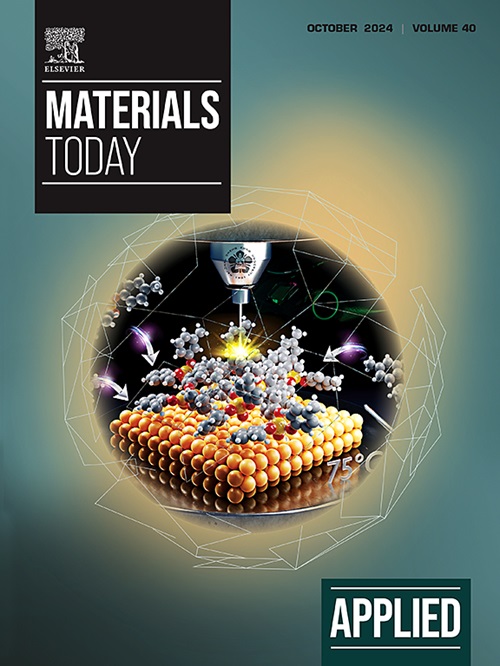生物衍生材料在过氧化物太阳能电池中的应用前景
IF 6.9
2区 材料科学
Q1 MATERIALS SCIENCE, MULTIDISCIPLINARY
引用次数: 0
摘要
应评估可再生材料,以促进过氧化物太阳能电池(PSC)的可持续发展。特别是,生物衍生材料(生物材料)在 PSC 中的新兴应用在增强电荷传输、设备性能、灵活性、长期稳定性、可持续性和循环战略方面具有巨大潜力。本综述讨论了生物材料作为电荷传输层中其他功能材料的替代品或复合成分以及作为 PSC 溶剂系统的现状,并确定了新的研究方向。从表面粗糙度、润湿性、光学特性、缺陷浓度和柔性等方面讨论了纤维素对 PSC 的功率转换效率(PCE)、形状和长期稳定性的影响。利用生物材料制成的柔性 PSC 有利于运输和广泛应用,但由于弯曲周期中电荷阱的增加导致电子迁移率降低,可能会产生其他一些不利影响,从而降低 PCE。如果将生物材料应用于电荷传输层,特别是作为电子传输层和活性材料之间的界面层,则可在缺陷钝化、提高 PCE 和 PSC 的长期稳定性方面发挥重要作用。本文章由计算机程序翻译,如有差异,请以英文原文为准。
The prospects of biologically derived materials in perovskite solar cells
Renewable materials should be appraised for advancing the sustainability of perovskite solar cells (PSCs). In particular, emerging applications of biologically-derived materials (biomaterials) in PSCs have tremendous potential in enhancing charge transport, device performance, flexibility, long-term stability, sustainability, and circularity strategies. This review discusses the current status and identifies new research directions for biomaterials as either substitutes or composite constituents with other functional materials in charge transport layers and as solvent systems for PSCs. The current understanding of the effect of cellulose on power conversion efficiency (PCE), shape, and long-term stability of PSCs is discussed in terms of surface roughness, wettability, optical properties, defect concentration, and flexibility. Flexible PSCs that utilise biomaterials are advantageous for transportation and widespread implementation, but suffer several other possible adverse effects that lower the PCE due to decreased electron mobility from increased charge traps during bending cycles. Biomaterials have considerable scope in defect passivation, boosting PCE, and long-term stability of PSCs when applied in charge transport layers, particularly as interfacial layers between the electron transport layer and active materials.
求助全文
通过发布文献求助,成功后即可免费获取论文全文。
去求助
来源期刊

Applied Materials Today
Materials Science-General Materials Science
CiteScore
14.90
自引率
3.60%
发文量
393
审稿时长
26 days
期刊介绍:
Journal Name: Applied Materials Today
Focus:
Multi-disciplinary, rapid-publication journal
Focused on cutting-edge applications of novel materials
Overview:
New materials discoveries have led to exciting fundamental breakthroughs.
Materials research is now moving towards the translation of these scientific properties and principles.
 求助内容:
求助内容: 应助结果提醒方式:
应助结果提醒方式:


